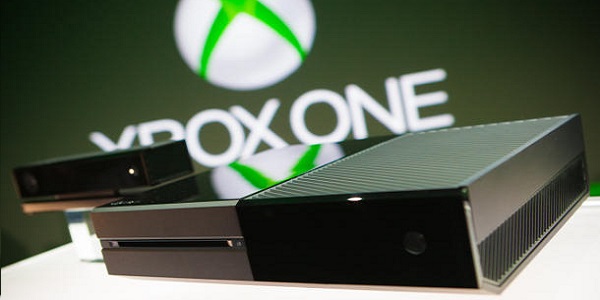E3 2013: Xbox One Reps Dive Into Console's Potential

To help bring everyone up to speed on the capabilities of the Xbox One, Microsoft hosted “Xbox 101” events throughout E3, allowing media to take a gander at a few tech demos showing off features like cloud computing and the new Kinect camera.
Xbox One Engineering Manager Jeff Henshaw and Producer Mike Mahar led the show, beginning with a trip into the cosmos guided by Henshaw.
The first tech demo Henshaw had on display showed a ridiculous number of pink dots floating on the screen. Those dots, it turned out, represented 40,000 asteroids. According to Henshaw, the Xbox team approached NASA in order to snag some information regarding the galaxy, tracking planets, asteroids, and more out to 3,500 light years from our sun. This particular demonstration had the single Xbox One handling 40k asteroids, their speed and trajectory in real time.
At the push of a button, another 290,000 dots littered the screen. Henshaw said that the Xbox One housed computing power equal to more than 10 Xbox 360s, which is how it was originally tracking 40,000 asteroids at once. Utilizing the cloud, however, those computations are dramatically increased.
“That kind of computation would melt existing consoles,” Henshaw said.
He went on to explain how this type of cloud-based heavy lifting could be utilized by game developers, shrinking load times down to zero or even keeping a game world “living” while the player is away, allowing it to have aged in real time the next time they log on.
Henshaw's next few demonstrations revolved around the new Kinect camera and the precision with which it is able to track the human body.
CINEMABLEND NEWSLETTER
Your Daily Blend of Entertainment News
“What we wanted to look at was, can we make Kinect matter for the most hardcore of gamers,” he said.
To answer that question, the team tackled the first-person shooter genre. Henshaw showed how the Kinect could read his motions to activate various game features, like raising his hands to lift up a shield or tapping his temple to turn on x-ray vision. He also pointed at the screen to highlight multiple targets, then said “fire missiles” to take them out. Able to read subtle movement, Henshaw said the Kinect can now be used to map functions to simple gestures, rather than leaving them buried in menus like in previous generations.
Mahar followed with a shorter presentation, showing off some of the Xbox One's multimedia features that were first introduced during the console reveal. These included TV and sports integration, such as snapping an NFL news ticker app to the right of the screen while, on the main screen, he watched Game of Thrones. The fantasy football functionality was once again wheeled out, including an app that could be utilized while watching/playing other content and pop up messages letting you know how your fantasy team is doing. Mahar concluded his presentation by explaining that all of that app info could also just be beamed straight to your tablet using SmartGlass, providing a two screen experience rather than piling it all onto your TV.
“These are just some examples of the types of things the Xbox One will be capable of,” Henshaw said. “We're super excited about bringing these developments to you in November.”
Staff Writer for CinemaBlend.

Swifties Can't Stop Speculating About Why Taylor Swift Seemingly Edited Joe Alwyn Out Of Her 'Bejeweled' BTS Video

The Masked Singer's Season 12 Winners Get Honest About Whether It's Easier For Groups Or Solo Competitors On The Show

Jurassic World Rebirth’s Director Weighed In On The Franchise’s Future, But I’m More Hyped Over The Classic Blockbuster He Name-Dropped To Describe The Film
Most Popular






